There are heavy grey clouds covering the mountains, and the air is perfectly still. The waters between Dili, the capital of Timor-Leste, and Ataúro Island are, for the first time in months, completely flat. The season is changing – and the whales are coming.
Once again, the Blue Ventures’ staff and volunteer team have been able to join Professor Karen Edyvane, from the National University of Timor-Leste, in her yearly quest to study the pygmy blue whale migration.
Karen has already trained community fishermen in data collection to ensure a constant flow of data from Ataúro’s coastal villages. Engaging eco-tourists and volunteers in data collection is also critical to the success of her whale monitoring and the cetacean ecotourism development project.
Three days of boat surveys around Ataúro Island were planned, with the goal of identifying individual whales and, hopefully, finding links to the populations regularly sighted off southwest Australia.
The ultimate goal of Karen’s research is to discover whether the migration is consistent and predictable enough to support whale-watching tourism in Timor-Leste, with the potential to provide income and alternative livelihoods for the island’s fishing communities.
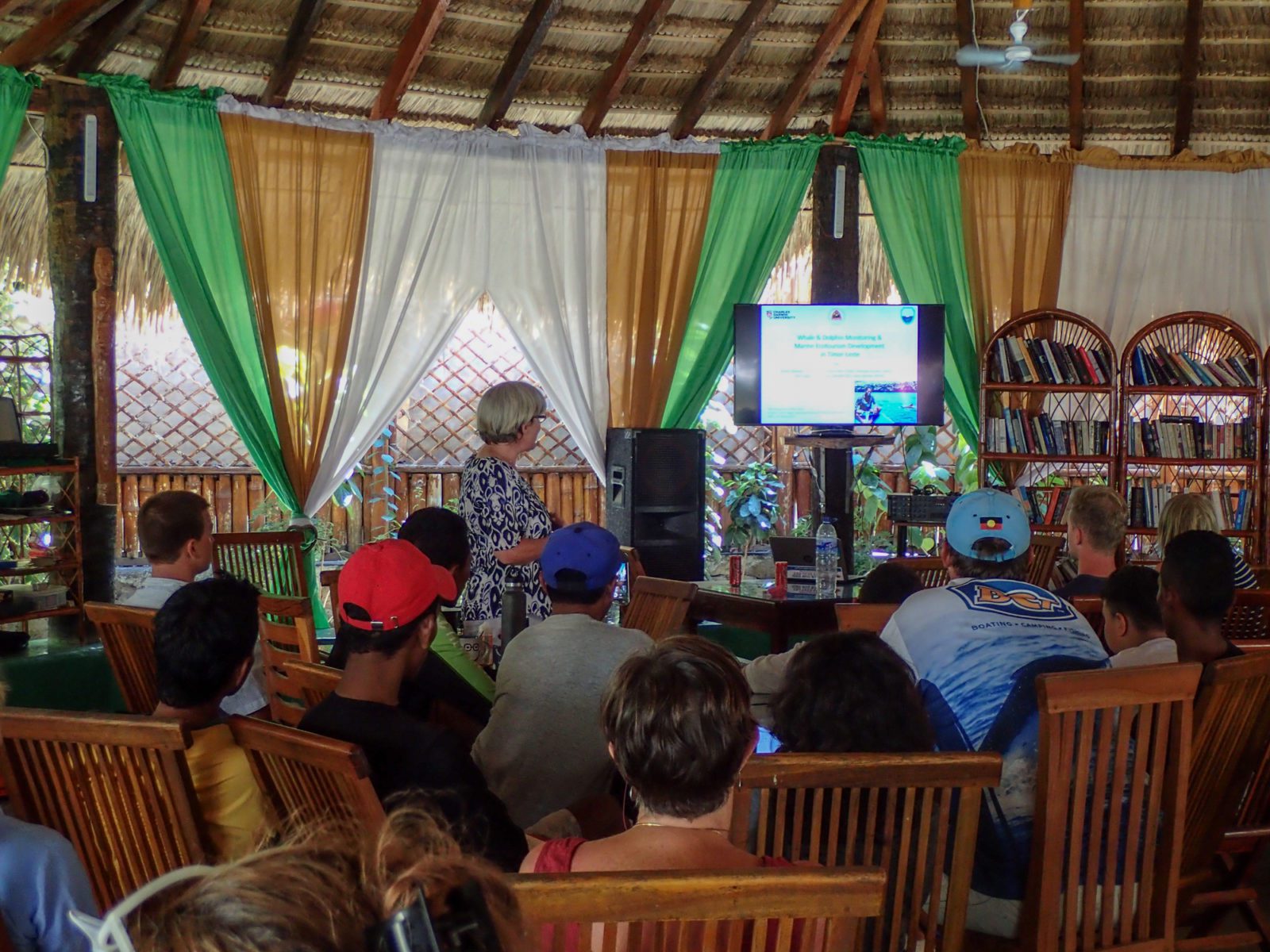
Karen introducing her work to Blue Ventures’ volunteers before training them in cetacean surveying methods.
On the first day of surveying, we left Dili early in the morning on the MV Ataúro, a small but sturdy vessel with a very friendly Timorese crew who offered us coffee and ginger sweets as everybody took up their position on the boat.
Our luck seemed good; as we were immediately greeted by a large pod of flamboyant spinner dolphins, busy delivering their first show of the day.
Taking out our cameras, we all tried to get as many photos as possible so as to confirm the species identification. This pod of spinners clearly finds humans as fascinating as we find them, as they eagerly approached our boat and rode our bow waves for a little while.
There’s a resident pod of spinner dolphins in Ataúro, but they are much smaller than these guys, and a lot shyer. Karen suspects they might be a separate dwarf sub-species but we don’t have a lot of data on them as the pod keeps swimming away when we approach them. They clearly have no respect for good science.
We stayed with the pod for half an hour to collect enough data and footage, and to enjoy their acrobatics before heading to the south of Ataúro, where whales are most commonly sighted. We unfortunately ended our first survey and docked in Beloi without any whale sightings.
On our second day we were joined by Blue Ventures’ expedition volunteers, who had been busy doing reef surveys the day before, and some interested tourists.
Close to the northern tip of the island, we noticed several birds circling ahead. Birds and sea mammals are often found together as they feed on the same prey, so looking for seabirds is generally a good way to find cetaceans.

Crewmen on the MV Ataúro
As we approached, it turned out to be a mixed flock of terns, frantically dipping their bills in the water, and some more elegant brown boobies, circling higher up. The water looked disturbed too, as if it were close to boiling. There are animals out there, I thought.
As if on cue, the first whale breached, showing a flash of shiny black skin. Everybody on the boat simultaneously went “wow!” and rushed for their cameras!
Short-finned pilot whales are very social animals, and we were quickly surrounded by a large pod of seventy individuals – Ataúro’s resident pod – who were calmly feeding all around us.
The pod stayed with us for almost a whole hour, entirely undisturbed by our presence, but we eventually had to leave them as they headed off to Pulau Lyran, the Indonesian island next to Ataúro, and we continued our own journey.
Our third survey was on the way back to Dili, and by this point I was feeling quite tanned – some might say sunburnt – but still very excited. We still had yet to find our real target, the pygmy blue whales.
The problem with searching for these elusive creatures is that their migration is still not quite understood. We have a general idea, but we don’t exactly know when they will pass through Timorese waters. Karen’s data collecting fishermen said that they’ve had no sightings yet this year, as the sea this year has been rougher than usual. It’s possible that they aren’t here just yet.
Suddenly, just as we were nearing Dili, somebody yelled “blow!” and we all turned around to see a tall spray of water in the distance.

The tell-tale sign of a whale, visible from a distance.
As we got closer we were able to confirm, it’s a blue whale! Oh wait no, it’s three blue whales, and they’re huge! While they are called ‘pygmy’ blue whales – they still reach lengths of up to 24m.
This group of three were swimming placidly but quite speedily (about five knots) along the coast moving west, with Dili’s harbour in the background.
We approached them cautiously, looking to get some good photographs and video, but keeping to a safe distance. The aim was to get clear images of the small dorsal fins and characteristic blue and grey mottling on the skin, which would allow us to identify each individual whale.

Pygmy blue whale
For accurate identification, photographs are needed of both the left and right side of the whales and, fortunately enough, during the time we were with them they swam on both sides of the boat, their powerful 10m high blows awe-inspiring at such close range.
The sheer size of them is hard to comprehend as they gracefully emerge from the water. After the earlier excitement, everyone on the boat goes quiet, taking in the experience. Few things beat being in the presence of one of the largest creatures that has ever lived.
We stay with the whale family for forty minutes, collecting tons of photographs and video footage, before saying goodbye and wishing them a safe journey. They still have a long way to go – more than 5000km to Perth it’s believed – and then ultimately to the cool waters of the Subantarctic. One thing we do know – they’ll be back again next year.
Read about Timor-Leste volunteer Harrison Root’s two favourite mornings on Ataúro Island.
Blue Ventures would like to thank our supporters and funders including the Darwin Initiative through UK Government funding, the GEF through UNEP under the Dugong and Seagrass Project, and Wilstar.






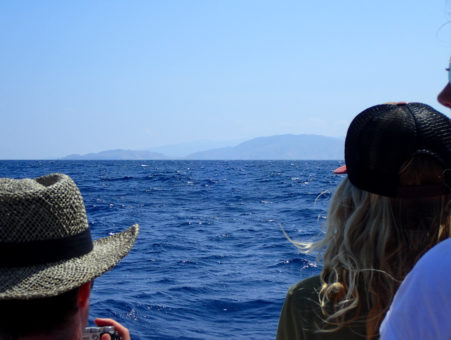
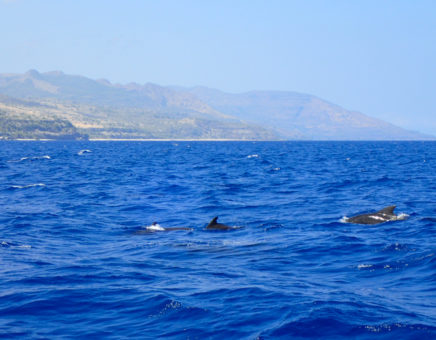
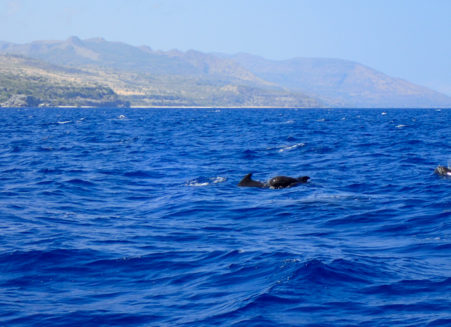
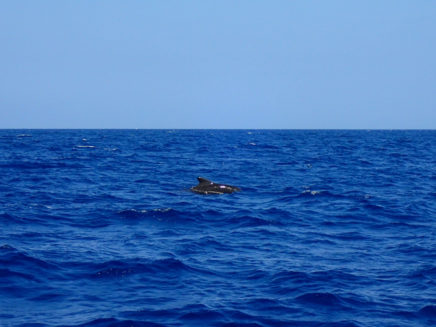

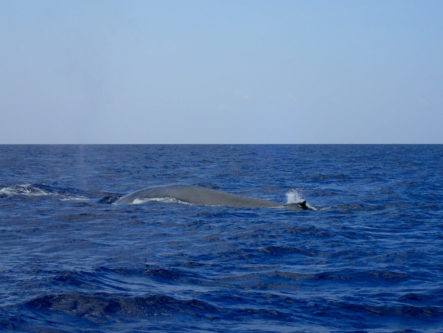
What time of the year is the whale migration ?
Hi Christopher!
The Wetar and Ombai Straits are migratory channels for many species of whale and dolphin, a cetacean hotspot! Short‐finned pilot, melon‐headed, humpback, blue, beaked and sperm whales are all regular visitors, as well as spotted, spinner, bottle‐nosed, striped, Risso’s, Fraser’s and rough‐toothed dolphins – quite a list for a small country with huge ecotourism potential.
A total of 24 different species of whale and dolphin have been recorded in the waters off Ataúro. These waters reach depths of 3,000m, providing more than enough space, and food. Blue whales are listed as Endangered and sperm whales as Vulnerable, and to see either with regularity is exciting; to know that these are migratory channels is particularly valuable for monitoring efforts. The blue whale migration is usually around October/November.
Cheers!
Hi Ben,
What time of year do you see humpbacks or sperm whales migrating though?
Thanks!
Jody